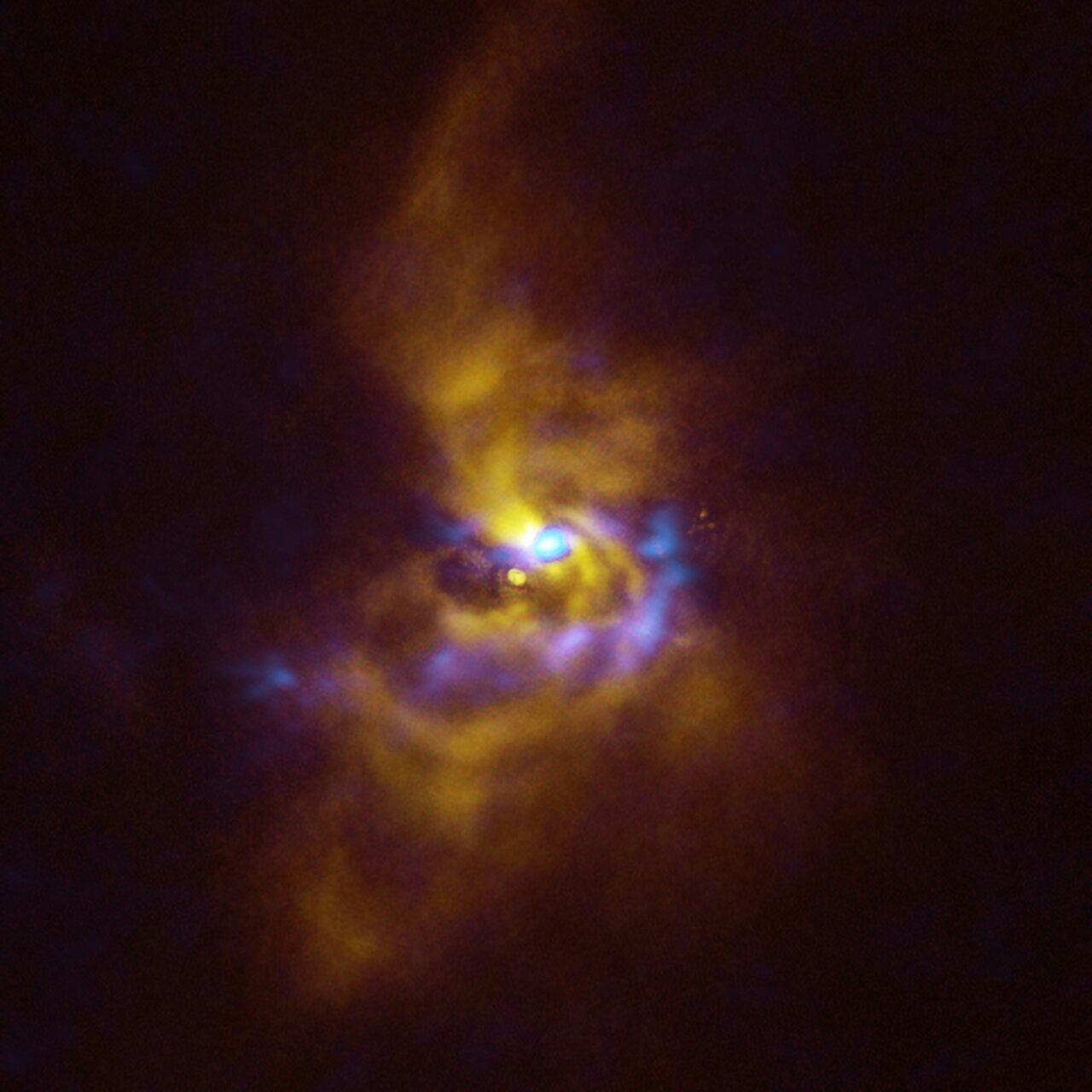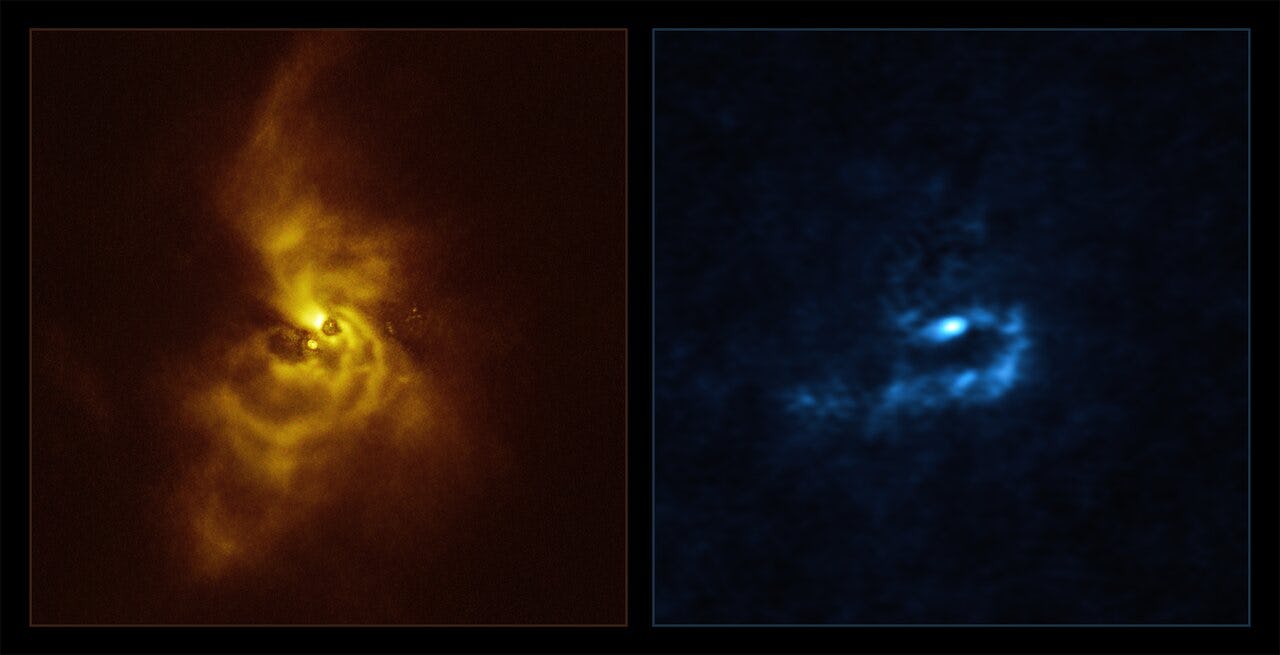
Jupiter-sized planets are forming inside a swirl of dusty material around a star 5,000 light years away.
Like most young stars, V960 Mon sits at the heart of a disk of gas and dust: the raw ingredients that will one day be a system of planets. The first steps are already happening. As the disk whirls around the star, it’s forming long, intricate spiral arms, like a galaxy in miniature.
Astronomers using the modestly-named Very Large Telescope glimpsed the spiral arms back in 2014, when the star got astronomers’ attention by suddenly flaring 20 times brighter than usual (young stars are sometimes prone to flares and outbursts). But what’s going on deep inside the dusty spiral arms may reveal the origins of giant planets.
The astronomers published their findings in The Astrophysical Journal Letters.

More than One Way to Make a Planet
Scientists have two theories about how planets form. One route, called core accretion, starts with just a few grains of dust that bump into each other and stick together. As the clump gets bigger, its gravity gets stronger, and soon it’s the size of an asteroid, catching and drawing in smaller chunks of rock. Eventually, the pile of material is large enough that gravity pulls it into a sphere, and a planet is born. Astronomers have seen this process in action before, so we know it happens.
But there’s another process, called gravitational instability, which works more like the way stars form in massive nebulae. Start with a cloud of dust and gas in space; like badly-stirred cake batter, it’s a little lumpy, and eventually one of those lumps collapses under its own gravity, settling into a sphere. A planet is born.
“No one had ever seen a real observation of gravitational instability happening at planetary scales — until now,” says University of Santiago astronomer Philipp Weber, who led the recent study, in a statement.
Using the Atacama Large Millimeter/submillimeter Array (ALMA) telescope in Chile, Weber and his colleagues peered deep inside the spiral arms of dust around V960 Mod.
“With ALMA, it became apparent that the spiral arms are undergoing fragmentation, resulting in the formation of clumps with masses akin to those of planets,” says coauthor Alice Zurto of Diego Portales University in Chile, in a statement. And some of those clumps may be on the verge of collapsing to form gas giants similar to our neighbor Jupiter. V960 Mod offers a glimpse at how these giant planets take shape, starting with the first hints of structure in the cloud of material around a newborn star.







